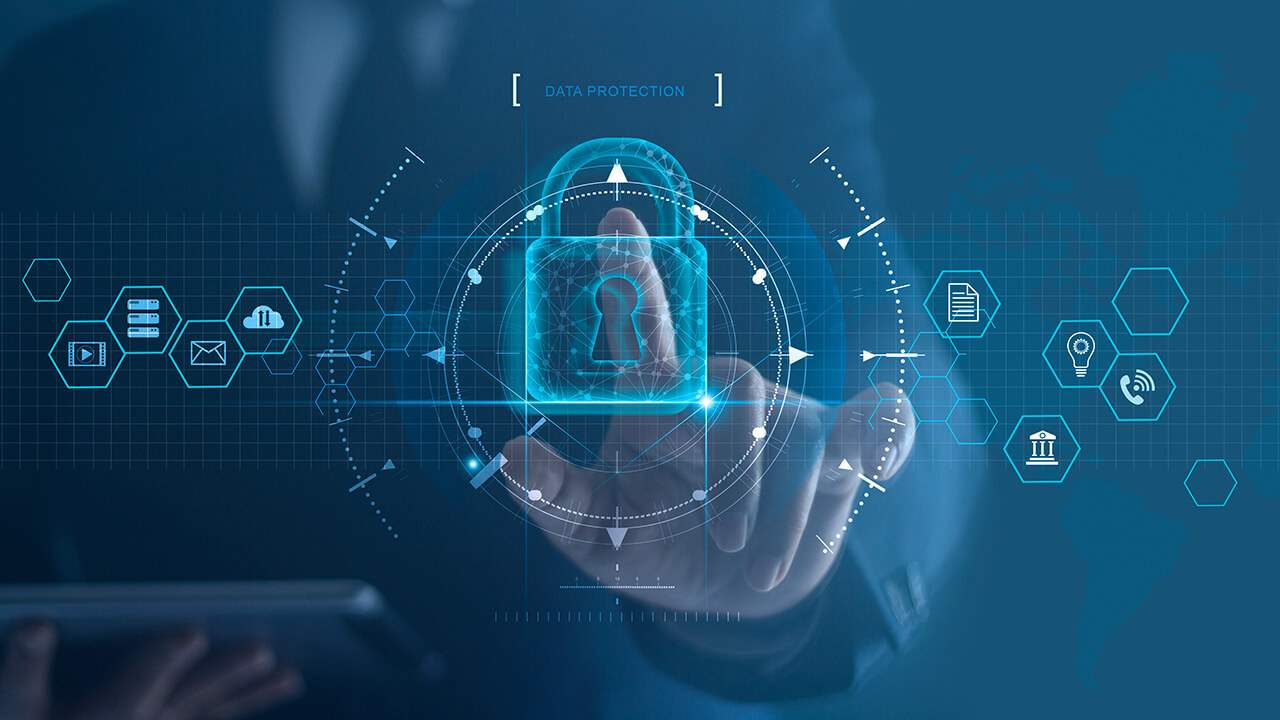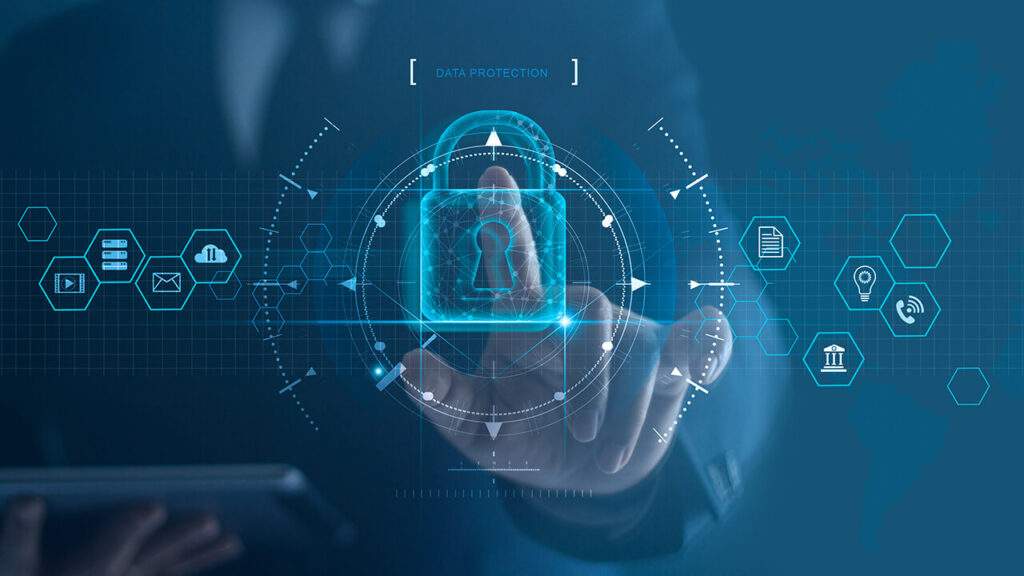
Unlocking Information Security Excellence: Demystifying the ISO 27001 Certification Journey
Understanding the Importance of ISO 27001: Safeguarding Your Digital Assets
In today’s interconnected digital landscape, the security of information assets is of paramount importance. ISO 27001 certification provides a framework for organizations to establish and maintain effective information security management systems. In this blog, we will explore the significance of ISO 27001 and how it helps safeguard your digital assets.
- Why ISO 27001 Matters: ISO 27001 is an internationally recognized standard that sets the foundation for robust information security practices. By implementing ISO 27001, organizations demonstrate their commitment to protecting sensitive data, mitigating risks, and ensuring the confidentiality, integrity, and availability of information assets. This certification instills confidence in customers, partners, and stakeholders, showcasing a proactive approach to information security.
- The ISO 27001 Certification Process: Achieving ISO 27001 certification involves a systematic approach. Organizations must conduct a gap analysis, identify risks and vulnerabilities, develop security controls, and implement an Information Security Management System (ISMS) aligned with ISO 27001 requirements. This process ensures that all aspects of information security are thoroughly evaluated and addressed.
- Key Elements for ISO 27001 Compliance: Successful ISO 27001 compliance requires attention to specific key elements. These include conducting risk assessments to identify potential threats, implementing controls to mitigate risks, establishing clear security policies and procedures, ensuring staff awareness and training, and regularly reviewing and updating the ISMS. These elements work together to create a comprehensive and proactive approach to information security.
- Securing Data through Risk Assessment and Mitigation: ISO 27001 emphasizes the importance of risk assessment and mitigation strategies. Organizations need to identify and assess potential risks to their information assets, such as unauthorized access, data breaches, or system vulnerabilities. By implementing appropriate controls and countermeasures, organizations can minimize these risks and safeguard their digital assets.
- Continuous Improvement for Long-Term Security: ISO 27001 is not a one-time achievement but a commitment to continuous improvement. Organizations must regularly monitor and review their ISMS, conduct internal audits, and perform management reviews to ensure ongoing effectiveness. By embracing a culture of continuous improvement, organizations can adapt to evolving threats, technologies, and regulations, ensuring long-term information security.
ISO 27001 certification is essential for organizations seeking to protect their digital assets and maintain a strong information security posture. By understanding the importance of ISO 27001, organizations can implement effective security measures, mitigate risks, and demonstrate their commitment to safeguarding sensitive information. Through a systematic approach, adherence to key elements, and a focus on continuous improvement, organizations can establish a robust ISMS and instill confidence in their stakeholders regarding their commitment to information security.
Step-by-Step Guide: Navigating the ISO 27001 Certification Process
The ISO 27001 certification process can seem daunting, but with proper guidance and understanding, organizations can successfully navigate through it. In this section, we will provide a step-by-step guide to help you navigate the ISO 27001 certification process smoothly and efficiently.
- Defining Scope and Objectives: The first step is to define the scope of your ISMS implementation. Determine the boundaries, assets, and processes to be included. Clearly articulate the objectives of achieving ISO 27001 certification, such as enhancing information security, complying with regulatory requirements, or gaining a competitive edge.
- Conducting a Gap Analysis: Perform a thorough assessment of your current information security practices against the requirements of ISO 27001. Identify gaps and areas that need improvement. This analysis will serve as a roadmap for implementing necessary controls and establishing an effective ISMS.
- Establishing the ISMS Framework: Develop an Information Security Management System (ISMS) framework that aligns with ISO 27001. Define policies, procedures, and guidelines to manage information security risks. Identify roles and responsibilities within your organization for effective implementation and enforcement of the ISMS.
- Implementing Controls: Implement the necessary controls to address identified risks and vulnerabilities. These controls may include technical measures (e.g., firewalls, encryption), operational procedures (e.g., access control, incident response), and management practices (e.g., training and awareness programs, regular audits). Customize the controls to suit your organization’s specific requirements.
- Training and Awareness: Ensure that all employees are trained and aware of their roles and responsibilities in maintaining information security. Conduct awareness programs and provide training sessions to educate employees on the importance of information security, best practices, and their compliance obligations under ISO 27001.
- Conducting Internal Audits: Perform regular internal audits to assess the effectiveness of your ISMS and its compliance with ISO 27001 requirements. Identify any non-conformities and take corrective actions promptly. Internal audits help ensure that your organization maintains a robust and continuously improving information security management system.
- Engaging a Certification Body: Select an accredited certification body to conduct the ISO 27001 certification audit. Prepare the necessary documentation, including your ISMS framework, policies, and evidence of implementation. The certification body will evaluate your ISMS’s compliance with ISO 27001 requirements and determine if you meet the criteria for certification.
- Certification Audit: During the certification audit, the certification body will review your documentation, conduct interviews, and assess the effectiveness of your ISMS. Any non-conformities identified will need to be addressed and resolved. Once all requirements are met, the certification body will issue the ISO 27001 certification, validating your organization’s commitment to information security.
By following this step-by-step guide, organizations can navigate the ISO 27001 certification process with clarity and confidence. It is essential to define scope and objectives, conduct a gap analysis, establish an effective ISMS, implement controls, provide training and awareness, conduct internal audits, and engage a certification body. Successful certification demonstrates your organization’s dedication to information security, enhances trust among stakeholders, and positions you as a leader in safeguarding sensitive information.
Building a Robust Information Security Management System (ISMS): Key Elements for ISO 27001 Compliance
A robust Information Security Management System (ISMS) is the cornerstone of ISO 27001 compliance. It provides a structured framework for organizations to protect their information assets effectively. In this section, we will explore the key elements that contribute to building a strong ISMS and achieving ISO 27001 compliance.
- Leadership and Commitment: Top-level leadership plays a crucial role in establishing an effective ISMS. Management must demonstrate a strong commitment to information security and allocate necessary resources for its implementation. By fostering a culture of security awareness and making information security a priority, organizations set the foundation for a robust ISMS.
- Risk Assessment and Management: Risk assessment is a fundamental element of ISO 27001 compliance. Organizations must identify and assess potential risks to their information assets. This involves understanding the value and sensitivity of the information, evaluating threats and vulnerabilities, and quantifying the potential impact of risks. Through risk management processes, organizations can prioritize and implement appropriate controls to mitigate identified risks effectively.
- Information Security Policies and Procedures: Clear and well-defined information security policies and procedures are essential for ISO 27001 compliance. These documents outline the organization’s approach to information security, define roles and responsibilities, and provide guidance on best practices. Policies and procedures should align with ISO 27001 requirements and be communicated to all employees to ensure consistent implementation across the organization.
- Asset Management and Classification: Effective asset management is crucial for protecting information assets. Organizations need to identify and classify their information assets based on their value, sensitivity, and criticality. By assigning appropriate levels of protection and implementing controls to safeguard these assets, organizations can mitigate the risks associated with unauthorized access, disclosure, or loss.
- Incident Response and Business Continuity: Having robust incident response and business continuity plans is vital for ISO 27001 compliance. Organizations must establish procedures to detect, respond to, and recover from security incidents promptly. This includes defining roles and responsibilities, implementing incident response measures, conducting regular drills and exercises, and maintaining backups to ensure business continuity and minimize the impact of disruptions.
- Monitoring and Continual Improvement: ISO 27001 compliance requires organizations to establish monitoring mechanisms to assess the effectiveness of their ISMS. Regular audits, performance measurements, and management reviews help identify areas for improvement and ensure ongoing compliance. By continuously evaluating the ISMS, organizations can proactively address emerging risks, implement corrective actions, and enhance their overall information security posture.
Building a robust Information Security Management System (ISMS) is essential for ISO 27001 compliance. By focusing on leadership commitment, risk assessment and management, information security policies and procedures, asset management and classification, incident response and business continuity, and monitoring and continual improvement, organizations can establish a strong foundation for protecting their information assets. Achieving ISO 27001 compliance demonstrates a commitment to information security best practices, enhances stakeholder trust, and positions organizations as proactive defenders of sensitive information in an increasingly digital world.
Securing Data through Risk Assessment and Mitigation: ISO 27001 Compliance
Risk assessment and mitigation are integral components of ISO 27001 compliance. In today’s digital landscape, organizations face numerous threats to their data security. By conducting thorough risk assessments and implementing appropriate mitigation measures, organizations can safeguard their data and ensure ISO 27001 compliance. In this section, we will explore the importance of risk assessment and mitigation in securing data and achieving ISO 27001 compliance.
- Understanding the Risk Assessment Process: The risk assessment process involves identifying, analyzing, and evaluating potential risks to information assets. Organizations need to assess the likelihood and impact of risks, taking into account both internal and external factors. By understanding their specific risk landscape, organizations can prioritize and focus their mitigation efforts effectively.
- Identifying Potential Threats and Vulnerabilities: During the risk assessment process, organizations must identify potential threats and vulnerabilities that can compromise the security of their information assets. These can include malicious attacks, unauthorized access, system vulnerabilities, natural disasters, or human errors. By recognizing these risks, organizations can take proactive measures to mitigate them.
- Quantifying Risk Impact: Quantifying the impact of identified risks is crucial for effective risk management. Organizations need to assess the potential consequences of a security breach or data loss, including financial, reputational, and operational impacts. This quantification helps prioritize mitigation efforts and allocate resources accordingly.
- Implementing Mitigation Measures: Mitigation measures involve implementing controls and safeguards to minimize the likelihood and impact of identified risks. These can include technical controls such as firewalls, encryption, and access controls, as well as operational controls such as training, policies, and incident response procedures. By implementing a layered approach to security, organizations can create multiple barriers against potential threats.
- Regular Monitoring and Review: ISO 27001 compliance requires organizations to continuously monitor and review their risk landscape. Regular monitoring allows organizations to detect emerging threats, vulnerabilities, or changes in the risk environment. By conducting periodic risk assessments and reviewing mitigation measures, organizations can ensure their data security controls remain effective and aligned with ISO 27001 requirements.
- Continuous Improvement: ISO 27001 compliance is an ongoing process of continuous improvement. Organizations should learn from incidents, conduct post-incident reviews, and update their risk assessment and mitigation strategies accordingly. By embracing a culture of continuous improvement, organizations can stay one step ahead of evolving threats and enhance their data security posture.
Risk assessment and mitigation are vital for securing data and achieving ISO 27001 compliance. By conducting thorough risk assessments, identifying potential threats and vulnerabilities, quantifying risk impact, implementing appropriate mitigation measures, regularly monitoring and reviewing the risk landscape, and embracing continuous improvement, organizations can protect their data assets from potential breaches and demonstrate their commitment to information security. Effective risk assessment and mitigation form the foundation of a robust information security management system and contribute to the overall success of ISO 27001 compliance.
Continuous Improvement for Long-Term Security: ISO 27001 Compliance
Achieving ISO 27001 compliance is not a one-time accomplishment; it requires a commitment to continuous improvement. In an ever-evolving landscape of cyber threats and changing business environments, organizations must continually assess and enhance their information security practices. Let us now explore the importance of continuous improvement in maintaining long-term security and ensuring ISO 27001 compliance.
- Learning from Incidents: Incidents and security breaches can provide valuable lessons for organizations. By conducting thorough post-incident reviews, organizations can identify vulnerabilities, assess the effectiveness of their controls, and implement corrective measures. Learning from incidents helps organizations strengthen their security measures and prevent similar incidents in the future.
- Updating Risk Assessments: Risk assessments should be periodically reviewed and updated to reflect the evolving threat landscape. New technologies, emerging risks, and changes in business operations can introduce new vulnerabilities. By regularly reassessing risks, organizations can identify emerging threats and adapt their mitigation strategies accordingly. This ensures that information security measures stay relevant and aligned with the current risk profile.
- Monitoring and Reviewing Controls: ISO 27001 compliance requires organizations to monitor and review the effectiveness of their information security controls. Regular assessments and audits help identify gaps or areas for improvement. By analyzing control performance, organizations can proactively address weaknesses, strengthen controls, and enhance overall security posture. Ongoing monitoring ensures that controls continue to operate effectively over time.
- Employee Training and Awareness: Employees play a vital role in maintaining information security. Regular training and awareness programs keep employees informed about security best practices, emerging threats, and organizational policies. By promoting a culture of security awareness, organizations empower employees to identify and report potential risks, reinforcing the overall security posture and reducing the likelihood of security incidents.
- Embracing Technological Advancements: Technology is constantly evolving, and organizations must keep pace with the latest advancements to maintain strong security measures. This includes leveraging advanced security tools, adopting encryption technologies, implementing multi-factor authentication, and staying informed about emerging security trends. Embracing technological advancements ensures that organizations can address new threats and protect their data effectively.
- Engaging External Expertise: Seeking external expertise through security audits or engaging security consultants can provide valuable insights and recommendations. External experts can identify blind spots, offer fresh perspectives, and provide guidance on industry best practices. Leveraging their knowledge and experience allows organizations to enhance their security measures and ensure compliance with ISO 27001.
Continuous improvement is key to maintaining long-term security and ISO 27001 compliance. By learning from incidents, updating risk assessments, monitoring and reviewing controls, providing ongoing employee training and awareness, embracing technological advancements, and leveraging external expertise, organizations can stay ahead of evolving threats and enhance their information security practices. A proactive approach to continuous improvement ensures that organizations maintain a robust security posture, adapt to new challenges, and uphold the principles of ISO 27001 over time.
















